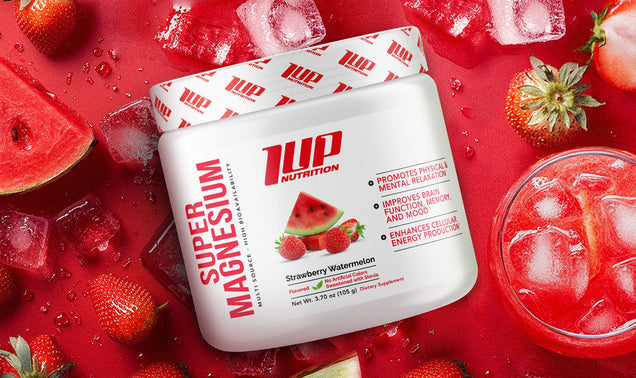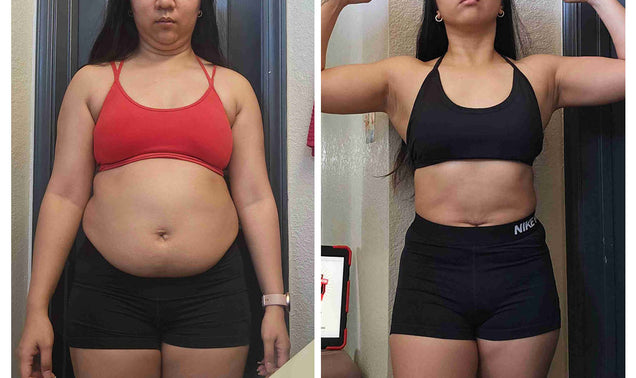Turning 40 is a big milestone for our bodies, especially how it responds to working out and the time it takes to recover. But, just because you’re older, a bit grayer, and (maybe) wiser, doesn’t mean you have to stop working out. What you need to do is stay active, but make a few tweaks to your lifestyle so that you can keep training hard, limit injury risk, and get the results you want.
Here’s how to reshape your body after turning 40.
Can You Reshape Your Body After 40?
ABSOLUTELY!
Getting in shape at 40 is possible. People are living a healthier, longer and more vibrant life than ever. So, when you hear people say that “40 is the new 30”, it is completely true.
The key things to help keep you feeling younger as you age is:
- Maintain high levels of physical activity
- Eat a healthy diet
- Get 7-9 hours of quality sleep
- Manage stress
Resistance training (aka weight lifting) is vital to reshaping your body after 40 as it helps build muscle, increase strength, boost metabolism, and burn fat. The more lean muscle and strength you have as you get older, the less likely you are to suffer slips, trips, or falls that can lead to bone breaks and a decreased quality of life.
Is It Harder To Build Muscle After 40?
Compared to teenagers and adults in their 20s and 30s, yes, it is harder to build muscle by comparison. The reasons for this are many, including decreased levels of muscle-building hormones, increased life stress (work, family, poor sleep, etc.), and less time for training. Our bodies also develop a measure of “anabolic resistance” with each passing decade which means that our bodies aren’t able to utilize protein as efficiently. This means that your protein intake should actually increase as you age, not get lower, especially if you’re looking to build muscle and strength.
All that being said, you can still build muscle after 40. You just need to be smart about your training, eating and recovery.
How Much Should A 40 Year Old Workout?
Recommendations from health experts state that adults need at least two and a half hours of moderate-intensity weekly activity (e.g. 30 minutes, 5 times per week).
If you’re looking to build muscle, which is essential for reshaping your body after 40, then you want to prioritize resistance training workouts and supplement with cardio-based workouts.
Here’s an example of how you could structure your weekly workout schedule:
- Monday: Full Body Workout
- Tuesday: 30 minutes of a brisk walk
- Wednesday: Total Body Workout
- Thursday: 30 minutes of yoga or interval training
- Friday: Total Body Workout
- Saturday & Sunday: Active rest/recovery
How Many Days Should A 40 Year Old Workout?
The number of days a 40 year old should work out is highly individual. When figuring out your own personal workout schedule, you need to consider how much time you have to train as well as how much time you have to recover all while keeping up with your other responsibilities (work, family, social commitments, etc.).
Be realistic with your schedule and your goals. You may aspire to train 5 times per week, but if you have a spouse and kids plus a full-time job that requires overtime, you likely won’t be able to hit the gym with a high-intensity that many times per week and still get enough quality sleep to support recovery and growth.
Here are five tips to help you create a routine that fits your lifestyle and your goals:
- Schedule It: Write your workouts in you planner or on your calendar just like you do meetings and appointments. This way you have defined time blocked out for your training. You’re less likely to skip it if it’s hard-wired into your day.
- Split the Time: On chaotic days when your schedule gets thrown for a loop, break up your workout into mini-chunks. Instead of a full 60-minute workout, try to complete 2-3 “mini” workouts of 20-30 minutes if you can. Note: this is easier if you train at home or have a gym in your office building.
- Small Changes Add Up Over Time: Consistency breeds success. So even little things like taking the stairs or going for walks during lunch can help boost metabolism and keep you on track with your fitness plan.
- Include Variety: Doing the same thing every workout is boring and can lead to overuse injuries and missed workouts. Make sure you include a variety of exercises throughout the week as well as a blend of resistance training and cardio workouts to get the best of both.
- Anything is Better Than Nothing: Even if you can’t get to the gym, at-home workouts are still effective and can help you stay on track with building muscle and losing fat. A few bodyweight circuits or supersets of push ups, pullups (inverted rows, and walking lunges hit all the major muscle groups and provide a great bang of your buck.
Lastly, if you’re not sure where to start with a workout plan, don’t sweat it! We’re here to help. The 1UP Fitness Appprovides customized training plans tailored to your specific goals and preferences along with eating plans. The best part -- it’s FREE!
How Should You Change Your Workout When You Hit 40
At 40 and beyond, your body recovers more slowly than it did in your 20s and 30s. With that in mind, you need to keep a certain amount of variety in your weekly schedule. At the same time, you don’t need to change exercises every week as it can be hard to judge progression (adding weight and reps over time).
So, if you’re training full body three times per week, you would want to include different exercises in each of those 3 workouts across the week. But each subsequent week, you would keep those same exercises and strive to perform more reps or add a bit of weight when you reach the upper end of your target rep range.
For example:
- Monday: Leg Curl, Leg Press, Dumbbell Chest Press, Cable Row
- Wednesday: Overhead Press, Pull Up/Lat Pulldown, Romanian Deadlift, Leg Extension
- Friday: Bent Over Row, Incline Chest Press, Walking Lunges, Kettlebell Swings
Every workout you’re hitting the same major muscle groups but at a slightly different angle which supports greater muscle growth and limits the risk of overuse injuries.
Keep the same exercises in place for 6-8 weeks and track your progress. Then, switch up your exercises (e.g. dumbbell chest press for machine chest press) and see how you progress over the next 6-8 weeks.
What Is The Best Workout For Over 40?
The best workout for adults over 40 depends on your goals. Generally speaking, though, it should include a mix of resistance training and cardiovascular training (i.e. “cardio”). You want to train all of your major muscle groups (chest, back, shoulders, arms, quads, hamstrings, glutes calves, and abs) so that you build a balanced, toned body and limit the possibility of muscle imbalances which can lead to pain and poor posture. It will also make you more resilient and functional. Plus, the training will have more variety and enjoyment!
The Bottom Line
As we approach 40, you can still build muscle, lose fat, and reshape your body. However, your recovery isn’t as quick as when you were younger, which means you need to be more mindful of your workout program and recovery practices. The best way to reshape your body after 40 is using a mix of resistance training and cardio (complemented with a consistent healthy diet and quality sleep).
To help you reach your goals at 40 (and for decades after!), we’ve created a diverse line of high-quality, lab-tested products formulated by experts. Whether you are looking for increased workout performance, delicious protein powders,or relaxation and recovery support, we’ve got you covered!
The main thing is don’t wait. Start today; we’re here to help you achieve your fitness and physique goals!






